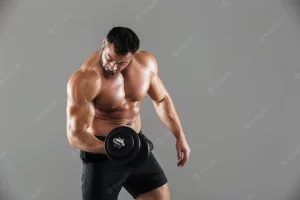
Contents
- 1
- 2 Introduction
- 3 What is keratosis pilaris?
- 4 How to treat keratosis pilaris with bodybuilding
- 5 Benefits of bodybuilding for keratosis pilaris
- 6 What is Keratosis Pilaris?
- 7 Types of KPs
- 8 How to Treat KP
- 9 What is keratosis pilaris?
- 10 Causes and Treatment of Keratosis Pilaris
- 11 How bodybuilders can treat keratosis pilaris
- 12 What is keratosis pilaris?
- 13 How bodybuilders can treat keratosis pilaris
- 14 Top benefits of bodybuilding for keratosis pilaris
- 15 What is Keratosis Pilaris?
- 16 Bodybuilding for Keratosis Pilaris sufferers
- 17 How to build muscle with KP
- 18 What to eat and drink when dieting for KP
- 19 How to train for KP
- 20 What is Keratosis Pilaris?
- 21 How Keratosis Pilaris Affects Bodybuilders
- 22 Treatment Options for Keratosis Pilaris
- 23 Conclusion
Introduction
Keratosis pilaris, also known as KP, is a common skin disorder in which coarse bumps form on the skin. These bumps can occur anywhere on the body, but are most commonly seen on the arms, legs, and trunk. While there is no known cure for KP, there are ways to manage it and even see improvements in symptoms over time. In this article, we’ll provide information on how to bodybuild while suffering from KP so that you can achieve beautiful, clear skin!
What is keratosis pilaris?
Keratosis pilaris is a skin disorder that affects the upper extremities. It is characterized by round, red bumps on the skin that can severely impact a person’s quality of life. Keratosis pilaris can be treated with various topical and oral medication, but there is no cure.
Bodybuilders who have keratosis pilaris should avoid using excessive water or heat while working out because they can exacerbate the bumps. The bodybuilder should also refrain from using harsh soaps or shampoos that could irritate the skin. Instead, he or she should use gentle cleansing products that are designed for sensitive skin.
Bodybuilders who have keratosis pilaris should also take care to avoid tight clothing and accessories because they can aggravate the condition. Finally, bodybuilders with keratosis pilaris should keep their skin moisturized at all times to help prevent dryness and cracking.
How to treat keratosis pilaris with bodybuilding
If you are reading this, it is likely that you have keratosis pilaris (KP). KP is a common skin condition that causes bumps on the skin. While it is not life-threatening, KP can be quite bothersome and make everyday activities difficult. Fortunately, there are ways to treat KP with bodybuilding.
The first step in treating KP is to identify the cause of the bumps. If the bumps are due to a hormone imbalance, then adjusting your hormone levels will help to alleviate the symptoms. If the bumps are caused by an irritation or infection, then treating that underlying issue will also work to improve symptoms. However, if the bumps are due to genetics or skin type, then there is not much that can be done to improve symptoms.
However, there are certain things that you can do to help manage KP. For example, you can use a topical cream or gel designed for KP to help decrease inflammation and improve skin texture. You can also use light therapy or topical steroids to reduce inflammation and reduce the size of the bumps. Finally, you can exercise regularly and maintain a healthy weight to help improve overall skin health and reduce the appearance of KP.
Benefits of bodybuilding for keratosis pilaris
Keratosis pilaris, also known as KP, is a skin disorder that results from the build up of keratinocytes (cells that make up the outer layer of skin) on the skin’s surface.
Bodybuilding can help improve the appearance of KP by helping to increase the amount of collagen and elastin in the skin, which can reduce the appearance of bumps and wrinkles. Additionally, bodybuilding can help to tone and sculpt the muscles surrounding the keratinocytes, which can give the appearance of a smoother complexion.
Though bodybuilding may not be appropriate for everyone with KP, it is an excellent way to improve the overall appearance of your skin and may help you feel more confident about yourself.
What is Keratosis Pilaris?
Keratosis pilaris (KP) is a skin disorder that causes large, red bumps on the arms and legs. It’s usually caused by a hormone imbalance, but it can also be triggered by skin cancer or other factors.
Most people with KP don’t have any problems and don’t require treatment. But some people find that their KP makes it difficult to do certain activities, such as working out or wearing shorts in summertime.
There are some tips for managing KP that can help you improve your overall health and well-being. Here are five of the most common tips for dealing with KP:
1. Talk to your doctor about your options for managing KP. There are different treatments available that can help improve your symptoms. Your doctor may recommend lifestyle changes, such as diet and exercise, or medication to help balance your hormones.
2. Use sunscreen every day to protect your skin from the sun’s UV rays. This will help reduce the number of bumps you get on your skin from KP.
3. Avoid using harsh soaps and detergents on your skin. They can worsen KP symptoms by causing irritation and
Types of KPs
There are many types of KP, and it can be a bit confusing to figure out which type you have. However, by understanding the different types, you can better manage your treatment and get the most out of your bodybuilding routine.
Non-circumscribed KP: This is the most common type of KP, and it’s usually just benign. There are no raised bumps or lesions on the skin. Non-circumscribed KP is typically caused by a gene mutation, but it can also be caused by other factors, such as sun exposure or certain medications. Treatment involves avoiding those factors that might cause the KP, and using topical creams or lotions to relieve symptoms. In some cases, medication may be necessary to clear up the bumps.
Circumscribed KP: Circumscribed KP occurs when bumps form on the skin around the hair follicles (pilaris). This type is more likely to be hereditary and associated with more serious conditions, such as basal cell carcinoma (BCC). Treatment for circumscribed KP usually involves removing the bumps surgically or using topical medications to reduce inflammation and improve skin appearance.
Pseudopilaris: Pseud
How to Treat KP
If you’re reading this, then you likely have keratosis pilaris (KP). You may also know it as “chicken skin,” “pie crusts,” “flecks” or “pimples.” KP is a genetic skin disorder that causes the formation of benign hard bumps on the skin. It’s most common on the upper arms, legs and trunk. There is no cure for KP, but there are treatments that can help make it less noticeable.
The good news is that KP is generally considered a cosmetic problem and can be treated to some degree with variousmeasures. In this article, we’ll discuss some of the most popular treatments for KP and how to use them.
What is keratosis pilaris?
KP is a genetic skin disorder that causes benign hard bumps on the skin. These bumps can be found on the upper arms, legs and trunk. There is no cure for KP, but there are treatments that can help make it less noticeable.
What are the symptoms of keratosis pilaris?
The main symptom of KP is the formation of benign hard bumps on the skin. However, other
What is keratosis pilaris?
Keratosis pilaris is a common skin condition that causes bumps on the skin. These bumps can be small or large and can develop anywhere on the body.
Keratosis pilaris is not a cancer, but it can be a sign of other health problems.
There is no cure for keratosis pilaris, but there are treatments that can improve the symptoms.
Bodybuilders who have keratosis pilaris may find that bodybuilding helps to improve the appearance of their bumps. Bodybuilders who have keratosis pilaris should discuss their goals with their doctor before starting a bodybuilding program.
Causes and Treatment of Keratosis Pilaris
KERATOSIS PILARIS (KP) is a skin condition that most commonly affects the upper arms, but can also occur on the trunk, face, and legs. KP is characterized by rough, bumpy bumps on the skin’s surface. These bumps are often associated with redness and irritation.
There is currently no known cure for KP, but treatment can help improve symptoms. Treatment options include topical therapies such as skin creams or lotions, oral medications such as steroids or retinoids, and laser therapy.
Bodybuilders who suffer from KP should be aware that the condition may make it difficult to build muscle mass. However, bodybuilders can still achieve good muscle growth rates by following a targeted training program and using appropriate supplements.
For more information on KP and its treatment, please visit our website or contact us at [email protected].”
How bodybuilders can treat keratosis pilaris
Keratosis pilaris ( KP ) is a common skin condition characterized by thick, red, bumpy layers on the arms and legs. Although it is not life-threatening, KP can be a frustrating condition because it often causes itching and irritation.
Fortunately, there are many ways to treat KP that are both effective and safe. Here are 4 tips for treating KP:
1. Use an exfoliant regularly: A good exfoliant will help remove the built-up layer of skin cells that is responsible for the symptoms of KP. Try a scrub or an enzyme treatment mask.
2. Use moisturizers: Moisturizers help keep the skin hydrated and reduce the inflammation and itchiness associated with KP. Choose a light formula that won’t contain lotions or oils that can aggravate the skin.
3. Apply sunscreen every day: Sun exposure is one of the main causes of KP, so make sure to apply sunscreen every day to protect your skin from the harmful UV rays.
4. Take supplements: Certain supplements, such as omega-3 fatty acids, can help improve the appearance of KP by improving collagen production. Talk to your doctor about what supplements
What is keratosis pilaris?
Keratosis pilaris is a skin disorder that causes the skin to become rough and scaly. It’s most common in people over the age of 30, but it can affect people of all ages. Keratosis pilaris is caused by a combination of genetics, lifestyle choices, and hormones.
There is no known cure for keratosis pilaris, but there are treatments that can help improve symptoms. Some of the most common treatments include topical creams and lotions, topical steroids, and phototherapy.
If you’re interested in bodybuilding for keratosis pilaris, be sure to talk to your doctor first. Bodybuilding can cause significant improvements in skin quality, but it’s important to be aware of the possible risks involved.
How bodybuilders can treat keratosis pilaris
Keratosis pilaris, or “chicken skin”, is a common skin condition that mainly affects people over the age of 30. The keratosis pilaris bodybuilding for bodybuilders article will outline the best ways to treat keratosis pilaris using bodybuilding methods.
Bodybuilders who suffer from keratosis pilaris can often find relief by using a combination of topical treatments and muscle-strengthening exercises. Topical treatments include moisturizers, sunscreens, and ointments that help to treat the surface layer of the skin while muscle-strengthening exercises help to improve the underlying function of the skin. In addition, bodybuilders can also take supplements such as Coenzyme Q10 and fish oil to improve their overall health and condition.
Top benefits of bodybuilding for keratosis pilaris
There are many benefits of bodybuilding for keratosis pilaris (KP). First and foremost, bodybuilding can help improve overall muscle tone and vascularity in the skin. This will help to reduce the appearance of KP and make your skin look smoother and more toned. Additionally, bodybuilding can help increase collagen production in the skin which will also improve the appearance of KP. Finally, bodybuilding can also help to improve overall strength and conditioning in the area which will help to promote better circulation and reduce inflammation in this skin condition.
What is Keratosis Pilaris?
Keratosis pilaris is a common skin condition that causes scaly patches on the arms, chest, back, and legs. People with keratosis pilaris often find that bodybuilding helps to improve their condition by increasing muscle mass and improving circulation. Bodybuilders who have keratosis pilaris should avoid large muscles and heavy weights, and instead focus on smaller muscles and lighter weights.
Bodybuilders who have keratosis pilaris can improve their condition by focusing on smaller muscles and lighter weights.
Bodybuilding for Keratosis Pilaris sufferers
Bodybuilding for Keratosis Pilaris sufferers is a great way to build muscle and tone your body. This condition is caused by the overproduction of keratinocytes, which are cells in the skin that help protect it from the environment. Bodybuilders with KP can build muscle and strength without any worries about creating too much keratin in their skin. Many bodybuilders find that bodybuilding is the perfect way to manage their KP as it not only builds muscle but also tones your body overall. There are many different types of bodybuilding exercises that can be used to help manage KP, from weightlifting to cardio. Whether you are new to bodybuilding or have been doing it for years, there are sure to be exercises that will help you manage your KP.
How to build muscle with KP
If you’re looking for a muscle-building program tailored specifically for keratosis pilaris, you may be wondering where to turn. Fortunately, there are a number of excellent resources available online, including bodybuilding forums and blogs.
One of the most comprehensive guides available is “The Muscle & Strength Training Bible for Keratosis Pilaris,” authored by registered dietitian Jill McDevitt. This book provides detailed training plans and diet recommendations for people with KP, as well as tips for overcoming common challenges.
Alternatively, you can try a forum such as Bodybuilding.com’s Keratosis Pilaris Forum, where experienced members can offer advice and support. And don’t forget to check out YouTube videos – many top trainers offer helpful how-to tips on KP bodybuilding.
Whatever route you choose, make sure to pay attention to your progress – if you see positive results from your muscle-building efforts, be sure to celebrate!
What to eat and drink when dieting for KP
Keratosis pilaris is an autoimmune skin condition that most often affects the upper arms, hands and legs. Although there is no known cure, there are several things you can do to help manage KP. One of the most important things you can do is maintain a healthy diet. Here are some tips on how to eat and drink when dieting for KP:
When dieting for KP, it’s important to stay hydrated. Drink plenty of water, especially during the hot summer months when temperatures tend to increase your thirst. Avoid caffeine, alcohol and processed foods. Instead, eat foods that are high in fiber and water content like fruits, vegetables and whole grains. Eat lean protein sources such as fish, poultry or beans. And make sure to include plenty of omega-3 fatty acids in your diet. These fatty acids have been shown to be beneficial for skin health in general and may help improve the appearance of KP.
How to train for KP
-Bodybuilders with keratosis pilaris (KP) frequently find that their skin tightens and thins, preventing them from building the muscle mass they want. Here’s how to train for KP in a way that still results in muscles.
First, be aware that you need less protein when training for KP. Second, make sure to include exercises that work both the large and small muscles in your body. Third, focus on compound exercises that use many muscle groups at once. Finally, make sure to vary your routine every few weeks to keep things interesting.

What is Keratosis Pilaris?
Keratosis pilaris, or KP for short, is a skin condition that mostly affects the upper body. It’s characterized by rough, bumpy patches on the skin that can be red, pink, or brown and are usually quite large.
KP is caused by an overproduction of keratinocytes (cells that make up the outer layer of the skin). Keratinocytes produce too much keratin, which leads to the formation of abnormal bumps on the skin.
KP can sometimes lead to hyperpigmentation (a darkening of the skin due to the accumulation of melanin).
There is no known cure for KP, but treatments can help reduce its severity. Many people find relief from KP through topical treatments like creams and lotions, topical ointments, shampoos, and masks. Some people also use oral medications like Accutane (isotretinoin) or coal tar products.
If you’re looking to improve your KP symptoms, be sure to discuss your options with your doctor. Bodybuilders who suffer from KP should consult a dermatologist before starting a weightlifting routine or any other type of intense exercise.
How Keratosis Pilaris Affects Bodybuilders
Bodybuilders are commonly affected by Keratosis Pilaris, a skin condition that causes patches of rough, bumpy skin on the arms and legs. Keratosis Pilaris is caused by a buildup of keratinocytes in the skin, and it can be extremely frustrating for bodybuilders who want to achieve smooth, hairless skin. However, there are ways to deal with Keratosis Pilaris and build muscle while you’re dealing with the condition.
There are a few things that bodybuilders should do to help deal with Keratosis Pilaris. First, they should try to keep their skin clean and free of oils and lotions. This will help to prevent the skin from becoming rougher and more difficult to work with. Second, bodybuilders should avoid excessively sweating or swimming when they have Keratosis Pilaris. This will help to avoid water retention and aggravate the skin condition. Finally, bodybuilders should avoid exposure to the sun too often, as this can also cause damage to the skin.
Despite these limitations, bodybuilders can still build muscle while they are dealing with Keratosis Pilaris. They should focus on building muscle mass rather than trying to get their
Treatment Options for Keratosis Pilaris
There are a few different treatment options for keratosis pilaris, depending on the severity of the condition. If keratosis pilaris is mild, topical treatments such as creams or lotions may be enough to help reduce the appearance of the bumps. If keratosis pilaris is more severe, surgery may be necessary to remove the bumps. There are many different types of surgeries available for keratosis pilaris, so it’s important to discuss your options with a doctor.
Conclusion
Bodybuilding is a popular sport that many people enjoy. However, for some people it can be difficult to build muscle due to keratosis pilaris (KP). KP is a common skin disorder that causes benign tumors on the skin’s surface. These tumors produce an oily substance that can cause mild discomfort and impede muscular development. In most cases, bodybuilders can still achieve great results by following the proper training and nutrition guidelines, but knowing about KP and how to work around it can help increase their chances of success.





